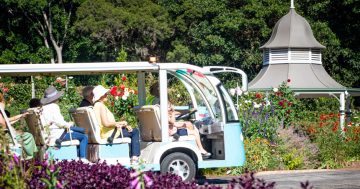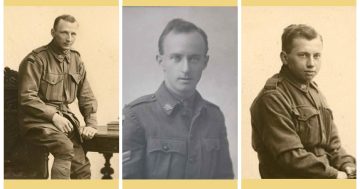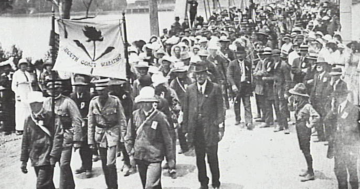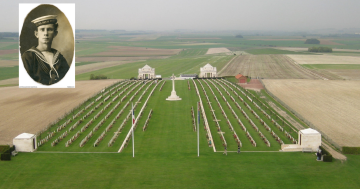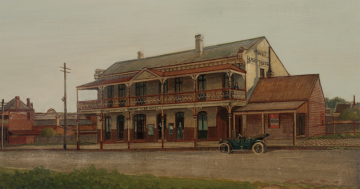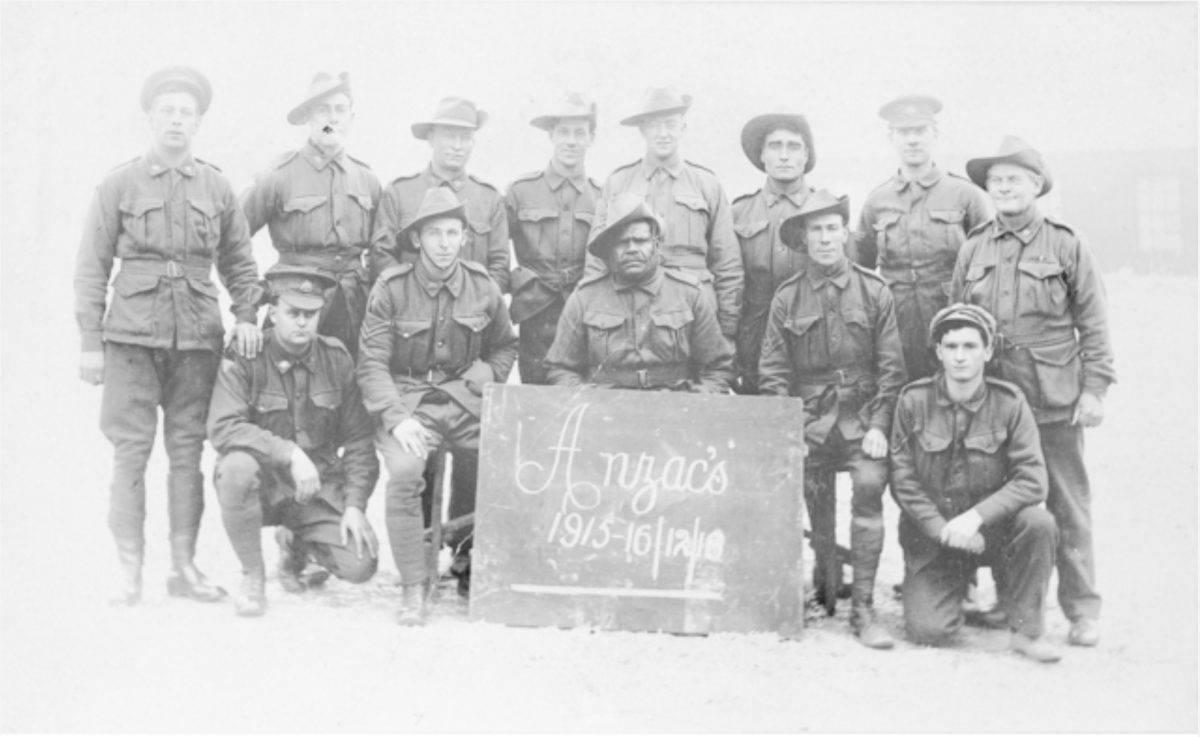
Richard McDonald (centre) after enlisting at Kiama in 1915. This photo was taken in France, c. 1916 and shows some non-commissioned officers and gunners. Photo: Australian War Memorial (P01 242.002).
Richard (Dick) McDonald was born on the Burdekin River in North Queensland on 25 April 1883.
When he enlisted in December 1915 at Kiama, having been caught up in the jingoistic hysteria of the Waratah Recruiting March, McDonald was said to have been 32 years old.
He also claimed to be still serving as part of the 37th Infantry Band, yet he did not sign the enlistment form and was presumably illiterate.
Richard’s enlistment form indicates he was 5 ft 9 (1.76 m) in height, had brown eyes and black hair and a “dark” complexion. His religious denomination was said to be Church of England.
His rank was private.
Hilariously, given the often ridiculous question of what actually constituted “Australian” citizenship back in 1915, this Indigenous man was said to be “British born” and to have worked as a labourer.
The reason Dick McDonald was living in the Illawarra, however, is that the Wollongong Inspector of Police, William J Anderson, had brought him here in 1913 to work as a “black tracker”.
Previously at Murrulebale – equidistant between Junee and Temora – McDonald had worked as a police tracker for Anderson, who was then stationed there.
In a noted case of arson at Murrulebale, McDonald worked in the bush for Anderson for a fortnight and had successfully brought a perpetrator to justice.
Sadly, their continuing partnership ultimately did poor Dick McDonald few favours. Inspector Anderson, unfortunately, had charge of the entire Waratah Route Recruiting March in the Illawarra, which started in December 1915.
After news of the murderous realities of the April 1915 Gallipoli debacle had started to filter home, it was becoming increasingly hard to attract local recruits.
Inspector Anderson thus became keen to make it clear that recruits previously rejected for being “too dark” were now most welcome to join up and get the chance to water the cold ground of Europe with their blood.
Tragically, in November 1917, a letter was received by Mr and Mrs William Anderson from their son, Gunner Aubrey Anderson, which said that “beyond all doubt” Dick McDonald had died of wounds received at the front.
The news report of this letter added: “It is worthy of note that when he had once tracked down an arsonist, a grateful local farmer at Murrulebale had sent Inspector Anderson a cheque for £50. Anderson then divided £25 of this amount between Dick McDonald and another unnamed constable who had taken part in the arrest of the culprit.”
So it was that the Illawarra Digger, Richard McDonald, ended up as cannon fodder in Europe. He had disembarked at Suez in June 1916 and was soon at Alexandria. He was with the 1st Anzac Battalion by 11 May 1917.
He died of gunshot wounds to the abdomen on 22 July and was buried at Warloy-Baillon Military Cemetery, west of Albert in France.
Dick McDonald was listed as unmarried when he enlisted but, mysteriously, a Miss A M Morrow of 16 Plunket Street, St Leonards was the named beneficiary of his will.
Miss Morrow had lived at Dapto in 1916 but in 1926 she applied to the military for a photo of Dick McDonald’s grave but found the notified cost of seven shillings too expensive for her to purchase.
Earlier Australian military records show that an address for Dick McDonald’s war medals proved untraceable.
Richard McDonald was yet another Indigenous victim of a senseless imperialist war and the jingoistic obsessions of a local police inspector.








